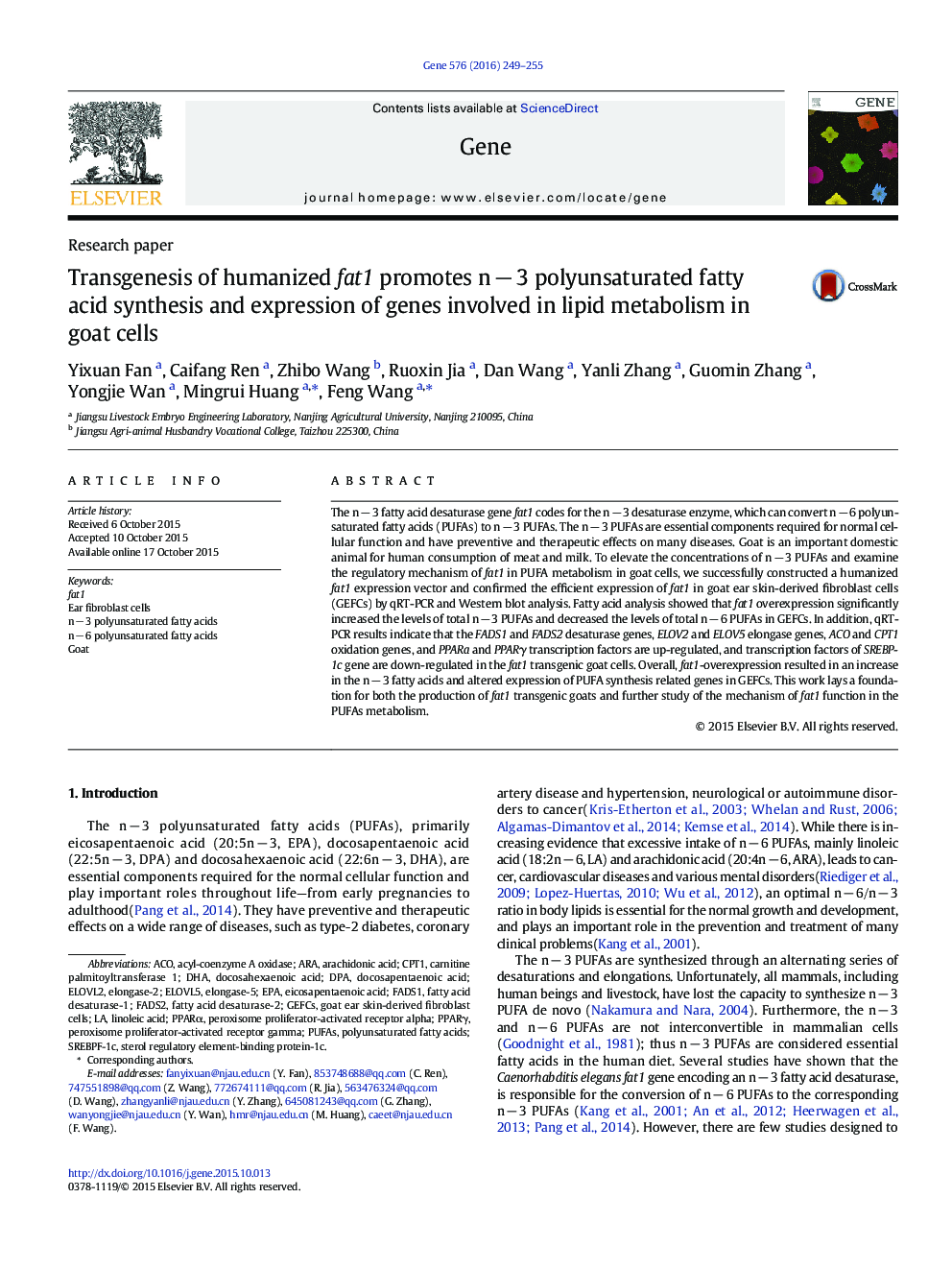| Article ID | Journal | Published Year | Pages | File Type |
|---|---|---|---|---|
| 2815256 | Gene | 2016 | 7 Pages |
•A eukaryotic vector of fat1 was constructed and can be efficiently expressed in GEFCs.•The expression of fat1 in GEFCs resulted in a significant increase of n − 3 PUFAs.•Fat1-overexpression altered expression of PUFA synthesis related genes in GEFCs.
The n − 3 fatty acid desaturase gene fat1 codes for the n − 3 desaturase enzyme, which can convert n − 6 polyunsaturated fatty acids (PUFAs) to n − 3 PUFAs. The n − 3 PUFAs are essential components required for normal cellular function and have preventive and therapeutic effects on many diseases. Goat is an important domestic animal for human consumption of meat and milk. To elevate the concentrations of n − 3 PUFAs and examine the regulatory mechanism of fat1 in PUFA metabolism in goat cells, we successfully constructed a humanized fat1 expression vector and confirmed the efficient expression of fat1 in goat ear skin-derived fibroblast cells (GEFCs) by qRT-PCR and Western blot analysis. Fatty acid analysis showed that fat1 overexpression significantly increased the levels of total n − 3 PUFAs and decreased the levels of total n − 6 PUFAs in GEFCs. In addition, qRT-PCR results indicate that the FADS1 and FADS2 desaturase genes, ELOV2 and ELOV5 elongase genes, ACO and CPT1 oxidation genes, and PPARa and PPARγ transcription factors are up-regulated, and transcription factors of SREBP-1c gene are down-regulated in the fat1 transgenic goat cells. Overall, fat1-overexpression resulted in an increase in the n − 3 fatty acids and altered expression of PUFA synthesis related genes in GEFCs. This work lays a foundation for both the production of fat1 transgenic goats and further study of the mechanism of fat1 function in the PUFAs metabolism.
